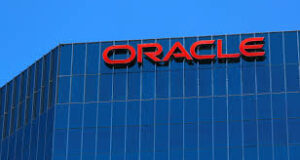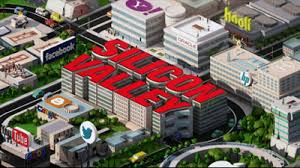THE NEWS: What Happened
Two serial entrepreneurs with a track record of building billion-dollar networking companies have emerged from stealth with over $100m in seed funding to challenge the closed, proprietary systems that dominate artificial intelligence infrastructure. Upscale AI, founded by Barun Kar (former Palo Alto Networks) and Rajiv Khemani (Innovium and Cavium founder), has secured backing from Mayfield and Maverick Silicon alongside Qualcomm Ventures, Stanford University, and six other institutional investors to launch an open-standard AI networking platform targeting data centre deployments.
The Santa Clara-based company represents a strategic bet against vendor lock-in that has characterized AI infrastructure development, where major technology companies maintain proprietary networking solutions that limit customer flexibility and competitive choice. Upscale AI’s approach leverages open-source technologies including SONiC, Ultra Accelerator Link, Ultra Ethernet, and Switch Abstraction Interface to create interoperable systems that enable multi-vendor AI deployments across training, inference, and edge computing applications.
The founding team has assembled over 100 technologists with experience from Marvell, Broadcom, Intel, Cisco, AWS, Microsoft, Google, and other networking infrastructure leaders, indicating systematic recruitment of expertise from across the AI infrastructure ecosystem. The company plans to launch its full-stack AI networking solutions this autumn, including ultra-low latency network fabrics, unified network operating systems, and rack-scale networking platforms designed to maximize accelerator performance while reducing total cost of ownership.
THE INTELLIGENCE: What It Means
This funding round signals a fundamental challenge to the architectural assumptions underlying current AI infrastructure, where closed systems have created substantial switching costs and limited customer negotiating power despite rapidly increasing deployment scale and cost requirements. The $100m seed round—extraordinarily large for infrastructure hardware—reflects investor recognition that open-standard networking could capture significant value by enabling competitive choice in AI deployments while reducing the vendor lock-in that currently constrains enterprise AI adoption.
The timing appears strategically advantageous as enterprises increasingly deploy AI workloads at scale and face infrastructure costs that justify multi-vendor evaluation rather than accepting single-vendor solutions for convenience. As AI training clusters expand from experimental to production deployments, organizations require networking infrastructure that provides cost optimization opportunities through vendor competition rather than proprietary solutions that limit procurement flexibility and price negotiation capabilities.
The competitive dynamics reveal significant opportunity for disruption in a market currently dominated by established technology giants whose networking solutions were designed for general computing rather than AI-specific requirements. Traditional networking vendors face the innovator’s dilemma: their existing product lines generate substantial revenue from proprietary architectures, creating institutional resistance to open-standard approaches that could commoditize their differentiated capabilities while enabling customer switching to competitive solutions.
The open-source positioning deserves particular scrutiny given networking infrastructure’s critical role in AI deployment success. Unlike software applications where open-source adoption faces limited technical risk, networking infrastructure requires proven reliability, performance, and support capabilities that have historically favored established vendors with extensive field deployment experience. Upscale AI’s success will depend on demonstrating that open-standard solutions can achieve comparable performance and reliability while providing cost and flexibility advantages over proprietary alternatives.
The industry participation in open-standard development—Ultra Ethernet Consortium, Open Compute Project, SONiC Foundation—indicates broader ecosystem momentum toward interoperability that extends beyond individual company initiatives. This collaborative approach suggests that open-standard networking may achieve industry acceptance more rapidly than previous attempts at networking commoditization, particularly if major technology companies adopt open standards to reduce their own vendor dependencies.
The funding structure, combining traditional venture capital with strategic investors including Qualcomm Ventures and Stanford University, indicates recognition that networking infrastructure success requires both financial resources and ecosystem relationships that enable customer acquisition and technology validation across diverse deployment environments.
THE BRIDGE: What To Do About It
For venture capitalists evaluating AI infrastructure opportunities, Upscale AI’s funding success highlights investment themes around breaking vendor lock-in across the AI deployment stack, with networking representing the first major category where open-standard alternatives may achieve enterprise acceptance. The most compelling opportunities appear to be companies developing open-source or interoperable solutions for AI infrastructure components where proprietary approaches currently limit customer choice and create pricing power for incumbent vendors.
Similar opportunities requiring strategic evaluation:
- Open-standard AI chip design and manufacturing: Companies developing interoperable accelerator architectures that reduce dependency on dominant chip vendors, particularly those enabling multi-vendor deployments through standardized interfaces
- AI software stack standardization: Platforms creating open-source alternatives to proprietary AI development frameworks, focusing on model deployment, optimization, and management tools that enable vendor flexibility
- Edge AI infrastructure platforms: Companies building open-standard solutions for distributed AI deployments, particularly those addressing interoperability challenges across different hardware vendors and deployment environments
Active investors in AI infrastructure disruption:
- Mayfield Fund: Now demonstrated conviction in open-standard AI infrastructure with track record of successful partnerships with founding team, likely seeking similar disruption opportunities across AI deployment stack
- Maverick Silicon: Hardware-focused fund with thesis around challenging incumbent semiconductor and infrastructure vendors through innovative architectures and business models
- Qualcomm Ventures: Strategic interest in AI infrastructure diversification that reduces competitive dependencies while creating market opportunities for Qualcomm’s own AI chip initiatives
- Infrastructure venture capital: Multiple funds focusing on data centre and cloud infrastructure transformation, seeking companies that address vendor lock-in and cost optimization challenges in enterprise AI deployments
For founders targeting AI infrastructure markets, Upscale AI’s approach provides strategic insights about timing market disruption when customer pain points from vendor lock-in create sufficient motivation to evaluate alternative solutions despite switching costs and technical risk. The emphasis on open standards and interoperability appears critical for achieving enterprise acceptance, particularly when challenging established vendors with significant installed base and support capabilities.
Technology differentiation should focus on solving specific performance or cost problems rather than generic open-source positioning, as enterprise customers require clear economic justification for infrastructure changes that involve technical risk and operational complexity. Upscale AI’s focus on ultra-low latency and total cost of ownership provides concrete value propositions that enable direct comparison with proprietary alternatives.
Industry ecosystem participation may prove essential for establishing credibility and driving adoption, particularly in infrastructure markets where standards development and vendor cooperation determine customer acceptance. Companies that contribute meaningfully to open-standard development while building commercial solutions may achieve faster market acceptance than those attempting to compete purely through proprietary innovation.








